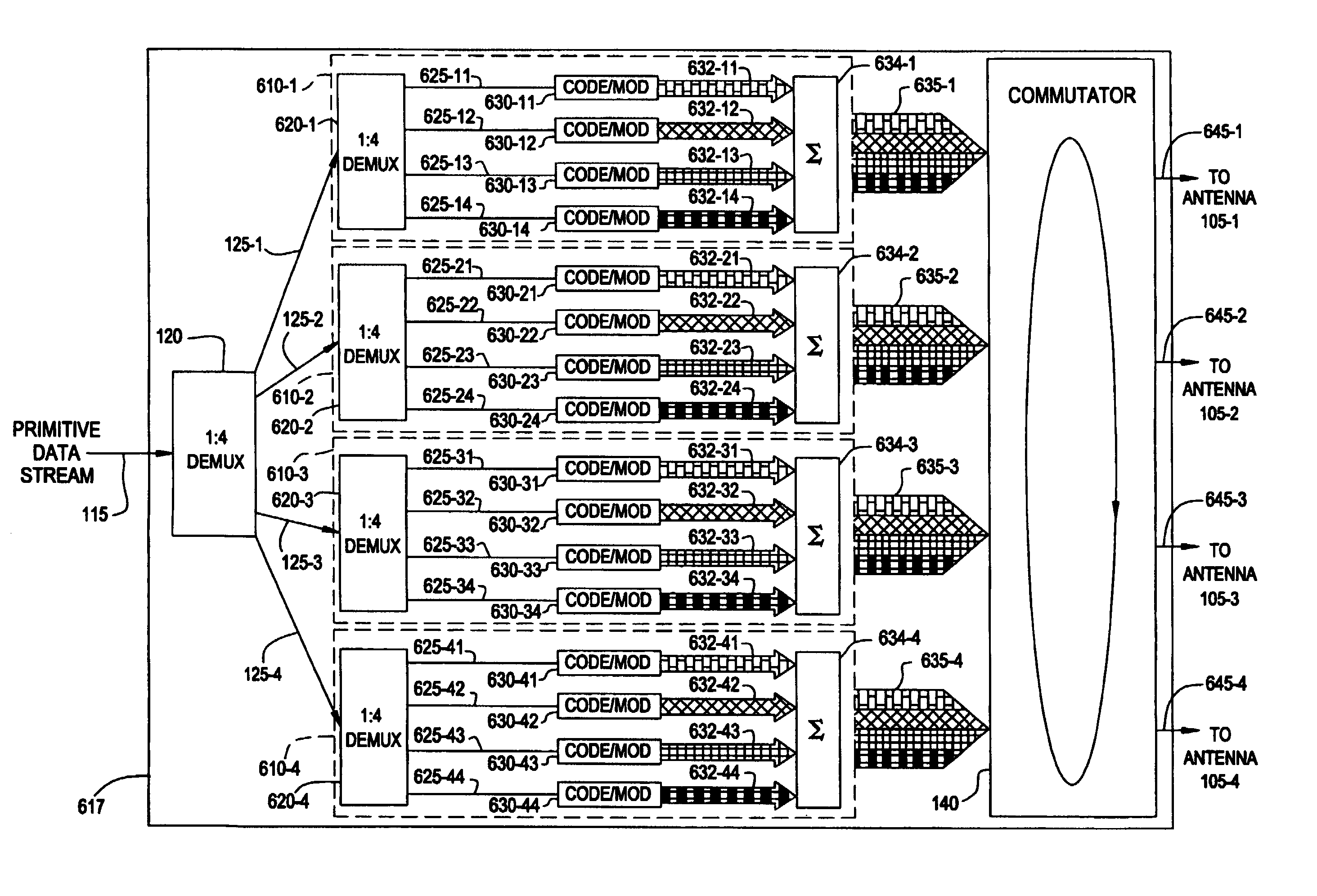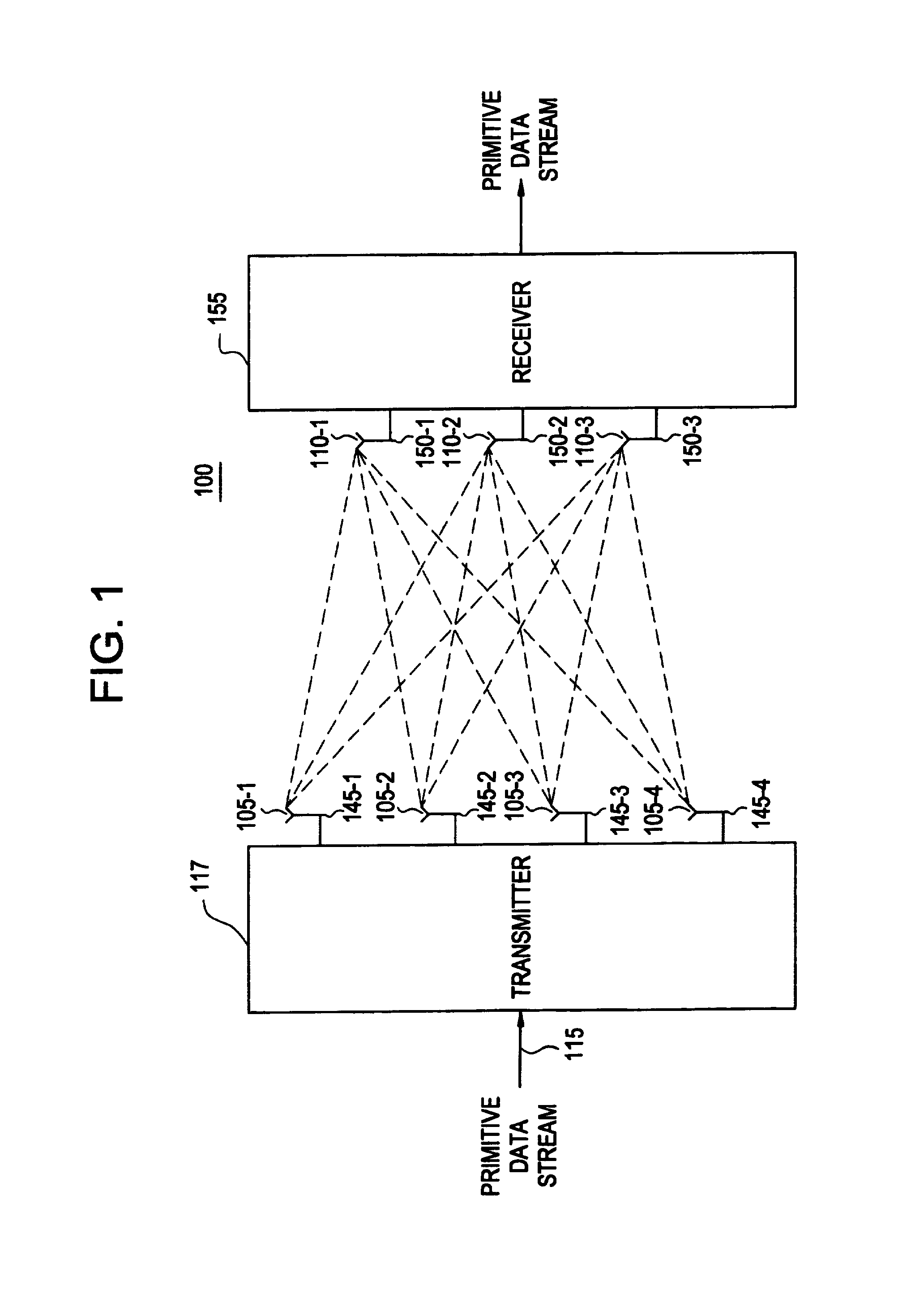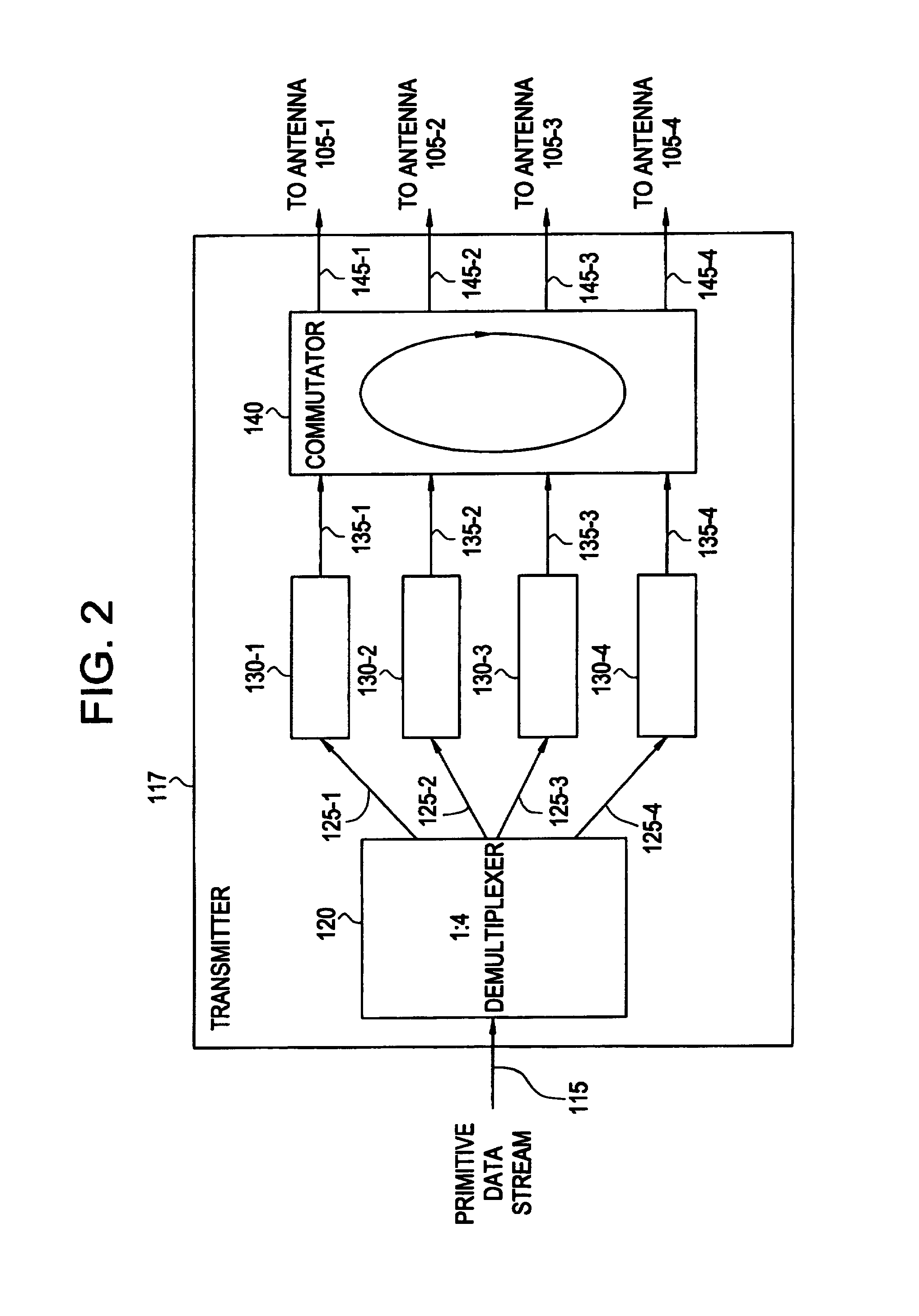Wireless communication system using multi-element antenna having a space-time architecture
- Summary
- Abstract
- Description
- Claims
- Application Information
AI Technical Summary
Benefits of technology
Problems solved by technology
Method used
Image
Examples
Embodiment Construction
[0029]As described above, wireless communication systems that use multiple antennas at the transmitter and optionally multiple antennas at the receiver, so-called multiple-input and / or multiple-output systems, can achieve dramatically improved capacity—error free maximum information rate—compared to single antenna systems, i.e., single antenna to single antenna systems. In random scattering propagation environments increasing the number of antennas at the receiver or at the transmitter (or both) produces a larger Shannon limit, i.e. a larger error free maximum information rate.
[0030]FIG. 1 illustrates multiple-input, multiple output wireless communication system 100 having four transmit antennas 105-1, 105-2, 105-3, and 105-4 and three receive antennas 110-1, 110-2, and 110-3. (Although, system 100 will be discussed as having a particular number of transmit and receive antennas, it is to be understood that system 100 may be implemented with any number of transmit and receive antenna...
PUM
 Login to View More
Login to View More Abstract
Description
Claims
Application Information
 Login to View More
Login to View More - R&D
- Intellectual Property
- Life Sciences
- Materials
- Tech Scout
- Unparalleled Data Quality
- Higher Quality Content
- 60% Fewer Hallucinations
Browse by: Latest US Patents, China's latest patents, Technical Efficacy Thesaurus, Application Domain, Technology Topic, Popular Technical Reports.
© 2025 PatSnap. All rights reserved.Legal|Privacy policy|Modern Slavery Act Transparency Statement|Sitemap|About US| Contact US: help@patsnap.com



